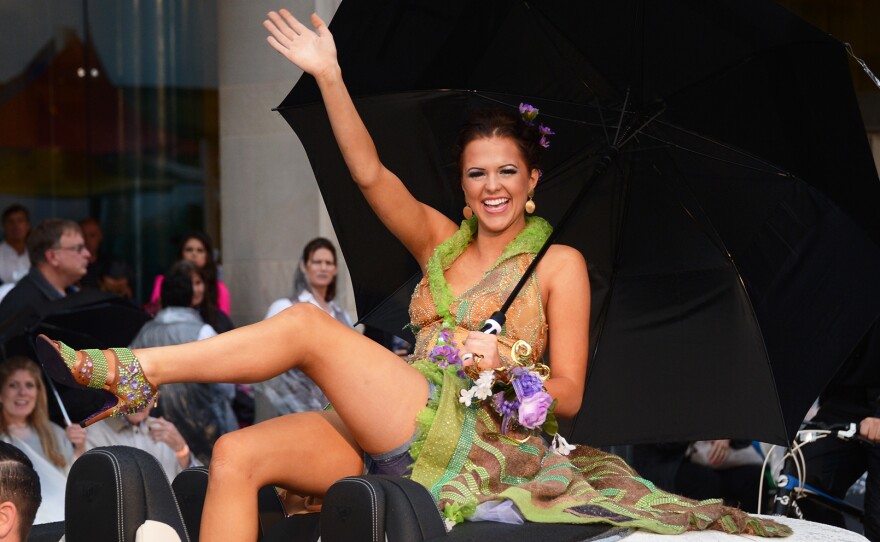
Last July, a photo changed Sierra Sandison's life. She went onstage in the Miss Idaho pageant with an insulin pump clipped to her bikini bottom. The photo and the #ShowMeYourPump hashtag she created went viral on social media, and became NPR's most popular online story of the year.
By the time the Twin Falls native walked the runway at the Miss America pageant in September with the insulin pump again clipped on her bikini, Sandison had become an inspiration to many people with Type 1 diabetes, and indeed any chronic medical condition.
Her Miss Idaho reign ended in June, but you'd barely notice. She's still traveling all over the country giving inspirational talks, and has just come out with a book called Sugar Linings: Finding the Bright Side of Type 1 Diabetes. Here's our conversation, edited for length and clarity.
What are "sugar linings?"
"Sugar linings" are the good things that come out of a diabetes diagnosis, but my book is really aimed towards anyone who's facing adversity. They're the positive things that come out of any difficult experience you go through.
For example, becoming Miss Idaho would never have happened if I didn't have diabetes. I was not popular growing up, not anyone's idea of a beauty queen. I was diagnosed with diabetes senior year in high school, and I hid it. I wasn't taking care of myself. I refused to get a pump for a long time. I thought that if I had an insulin pump it would disqualify me from being beautiful. But when I saw Miss America 1999, Nicole Johnson, wearing an insulin pump and still being beautiful, it gave me new confidence. I vowed to get an insulin pump for myself and then I also wanted to go to Miss America one day and do for others what Nicole had done for me.
The diabetes has also helped me find my passion. I've been privileged to travel the country and speak. But anybody diagnosed with diabetes or any adversity can use that later to make a difference in the lives of people who are going through the same thing, whether you have diabetes and spend time raising money for that, or if you're homeless and later can serve the homeless when you're back on your feet.
I really like how you talk about moving to Ecuador at age 14, when your dad was volunteering in a medical clinic. You hadn't been serious about school. But when you saw kids there who had to work on farms because they couldn't afford school, you realized "if I had this awesome opportunity right in front of me at home, I needed to take advantage of it to the fullest extent."
And you also say for you, the insulin pump is a symbol. How can that be, when it's a medical device you're using all day, every day?
One of my messages is that we all have our own "pump," things that make us insecure, that make us feel different, that we sometimes want to hide or hate about ourselves. I really want to encourage people not only to tolerate those things, but also learn to love and embrace them because they make you unique. We're taught by society that we should fit this certain mold, but there's so much beauty in diversity.
What are you up to now that your reign is over?
I'm no longer Miss Idaho, but the traveling isn't going to stop. Since giving up the crown, I've been to the huge Children with Diabetes conference at Disney World, and I'll be going to other events in California, New Orleans, Illinois and Minnesota, all before mid-August. So I'm going to be able to continue to spread my message, and now that I have my book, I'm squeezing in book signings. My schedule keeps getting fuller and fuller.
I have my things I call my "umbrellas" that make managing my diabetes easier, including the pump, a continuous glucose meter and home glucose monitors that are accurate. They're not necessarily things I love to have in my life, but since I have diabetes they make it easier to deal with.
And what when the book tour's over; will you get a job?
Probably not this year, but my friend and I want to start a business. I want to be an entrepreneur. To start, I want to have a crepe cart – It's a low startup cost, and I think it will be fun.
Miriam E. Tucker is a freelance journalist specializing in medicine and health. You can follower her on Twitter @MiriamETucker.
Copyright 2015 NPR. To see more, visit http://www.npr.org/.






